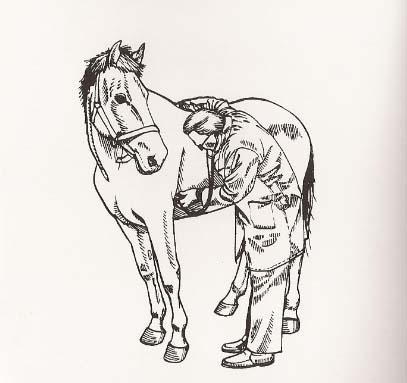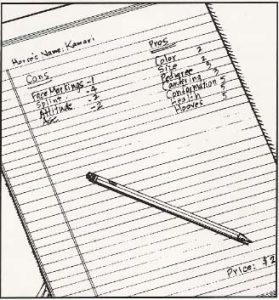What Is a Pre-Purchase Exam?
- posted: Dec. 08, 2015
Owning a horse can be a big investment in time, money and emotion. Unfortunately, horses seldom come with money-back guarantees. That’s why it’s so important to investigate all aspects of the horse professionals may be able to help you evaluate such things as ability, behavior or pedigree and you should seek their advice as necessary. However, only an accomplished equine veterinarian can help determine the prospect’s overall health and condition. Knowing about the health and condition of a horse before completing a purchase is one of the most significant factors in deciding whether that animal is going to be a wise investment.
 Whether you want a horse as a family pet, a pleasure mount, a breeding animal, or a high performance athlete, you stand the best chance of getting one that meets your needs by first investing in a purchase examination. The expense of the exam is well worth it, particularly compared to the long-term costs of keeping and caring for a horse with health problems.
Whether you want a horse as a family pet, a pleasure mount, a breeding animal, or a high performance athlete, you stand the best chance of getting one that meets your needs by first investing in a purchase examination. The expense of the exam is well worth it, particularly compared to the long-term costs of keeping and caring for a horse with health problems.
Purchase Exams should be Custom-tailored
Purchase examinations may vary, depending on the intended use of the horse and the veterinarian who is doing the examination. For example, a mare being bought as a brood mare may requires a thorough reproductive evaluation along with a routine clean bill of health. A gelding intended for use as a show hunter may need a comprehensive physical exam that includes a battery of lameness tests. Close inspection of the upper air passages may be required for racehorse prospects. Deciding exactly what should be included in the purchase examination requires good communication between you and your veterinarian.
Here are some guidelines to help you:
- Choose a veterinarian who is familiar with the breed, sport or use for which the horse is being purchased.
- Explain to your veterinarian your expectations and primary uses for the horse, including short- and long-term goals (e.g., showing, then breeding).
- Ask your veterinarian to outline the procedures that he/she feels should be included in the examination and why.
- Establish the costs for these procedures.
- Be present during the purchase exam. The seller or agent should also be present.
- Discuss with your veterinarian his/her findings in private
- Don’t be afraid to ask questions or request further information about your veterinarian’s findings.
No Pass or Fail
The veterinarian’s job is neither to pass nor fail an animal. Rather, it is to provide you with information regarding any existing medical problems and to discuss those problems with you so that you can make an informed purchase decision. Your veterinarian can only advise you about the horse’s current physical condition, which may include things like evaluating its conformation, its eyes and vital organs and, most especially, it’s limbs for signs of disease or injury. Your veterinarian can discuss how these things might affect performance from a heath standpoint, but he or she cannot predict the future.
Developing a Still Photograph
The purchase exam is like a still photo. It provides information about an individual horse on a given day at a particular moment. How accurate and complete that picture is will depend on how comprehensive the exam is and what the problems actually are. But remember: the still photo cannot provide the whole story. Many factors contribute to a horse’s past, present and future health; and these factors may not be apparent at the precise moment of the examination.
Still, the information contained in this portrait is very valuable. Ultimately, avoiding the purchase of a diseased or lame horse will save much disappointment and many dollars.
There is no standard protocol of procedures for a purchase exam; you and your veterinarian must decide which tests are most important for your particular needs. However, your equine practitioner may want to evaluate such things as:
- The horse’s medical history, including vaccination and deworming schedules, feeding and the use of any supplements or drugs (if such information is available; it may be necessary to get permission from the owner or agent for a review of the horse’s medical records)
- Pulse, respiration and body temperature
- The heart and lungs
- The nostrils, ears and eyes
- Limb and body conformation
- The body and limbs for signs of previous injuries or disease
- Blood samples for diseases such as equine infectious anemia, or for overall health
- The teeth and mouth
- The horse’s feet, both visually and with hoof testers
- The horse in motion, traveling in a straight line, in small circles and often under tack (These evaluations might be performed at the walk, trot and canter, and preferably, before as well as after, the horse has been warmed up)
- Joint flexibility and response of the limbs to flexion testing
- The horse’s behavior
Further Tests
A thorough clinical examination should alert the veterinarian to problems. If the veterinarian suspects something that may interfere with the horse’s intended use, he or she may recommend additional tests. These test, such as X-rays, nerve blocks, urine and blood analysis for the presence of drugs that might affect the results of the clinical exam, endoscopic and ultrasonic examinations, and other, may be chosen by the buyer or recommended by the veterinarian, based on clinical findings of the examination. Such additional tests may be used to help confirm a diagnosis or provide a clearer picture of the seriousness of the problem.
Radiographs(X-RAYS)
While many purchase exams include radiographs of the horse’s limbs, they are not a substitute for a thorough, systematic examination by your veterinarian. X-rays can give you a picture of how things are at the time that you buy the horse, but they cannot be used to predict the future. X-rays can also confuse the viewer by either providing a false sense of security or by suggesting problems that may in fact never surface. Rely on your veterinarian’s judgment regarding the need for radiographs, especially of no clinically apparent problem exists.
Reproductive Exams
Stallions and mares being purchased for breeding often require special tests to determine their reproductive status. For example, a stallion’s libido and fertility should be tested by observing his response to a mare and collecting a sample of semen. The collected semen should then be evaluated for sperm count, motility and viability.
A prospective brood mare should undergo rectal palpation so that the veterinarian can evaluate the mare’s reproductive tract for signs of normal activity or for the presence of structural problems. The veterinarian may also recommend additional testing, such as ultrasound or a uterine biopsy and culture. Such tests help determine the health of the mare’s uterus and help establish probability of her conceiving and carrying a healthy foal to term.
Understanding The Results
A thorough understanding of your veterinarian’s findings will help you make an informed decision about your prospective purchase. If you don’t understand what your veterinarian is telling you, you should ask questions until things become clear. When your discuss the results of a purchase exam with your veterinarian, keep the following points in mind:
- No horse is perfect in every respect.
- Some medical conditions or conformation faults are manageable or may never seriously affect the horse’s performance
- If such things as specialized shoeing, exercise or nutrition are necessary, decide whether or not they are practical for your needs and your budget.
- If in doubt about the findings, get a second opinion.
- Finally, make your own determination as to whether a horse is a good investment. Your veterinarian cannot tell you if you are going to like the horse, or whether you can ride it, handle it or get along with it. The purchase of a horse should be based on all the available data and you are part of the team that does the data collection!
Tallying The Balance Sheet
The decision to buy is yours alone to make. But our equine veterinarian can be a valuable partner in the process by providing you with objective, health-related information.
 Before completing your equine purchase, it might be helpful to create a balance sheet. Write the horse’s name at the top of a sheet of paper and the price at the bottom. On the right side, list everything you lie about the horse: color, size, breeding, performance, conformation, health, everything. In the left column list all the negatives. If you’d like, you can assign point values, positive and negative to each attribute. Then add up the positives and subtract the negatives, and you will probably have your answer.
Before completing your equine purchase, it might be helpful to create a balance sheet. Write the horse’s name at the top of a sheet of paper and the price at the bottom. On the right side, list everything you lie about the horse: color, size, breeding, performance, conformation, health, everything. In the left column list all the negatives. If you’d like, you can assign point values, positive and negative to each attribute. Then add up the positives and subtract the negatives, and you will probably have your answer.
Even if you should decide not to buy, consider the exam money well spent. He investment in a purchase exam can save you headaches, heartaches and dollars, and provide a perfect opportunity to find the right horse one that is healthy and can meet your needs and expectations.
**This information provided courtesy of the AAEP and Bayer Animal Health. For more information please reference www.yourhorseshealth.com
The post What Is a Pre-Purchase Exam? appeared first on South 40 Equine.

